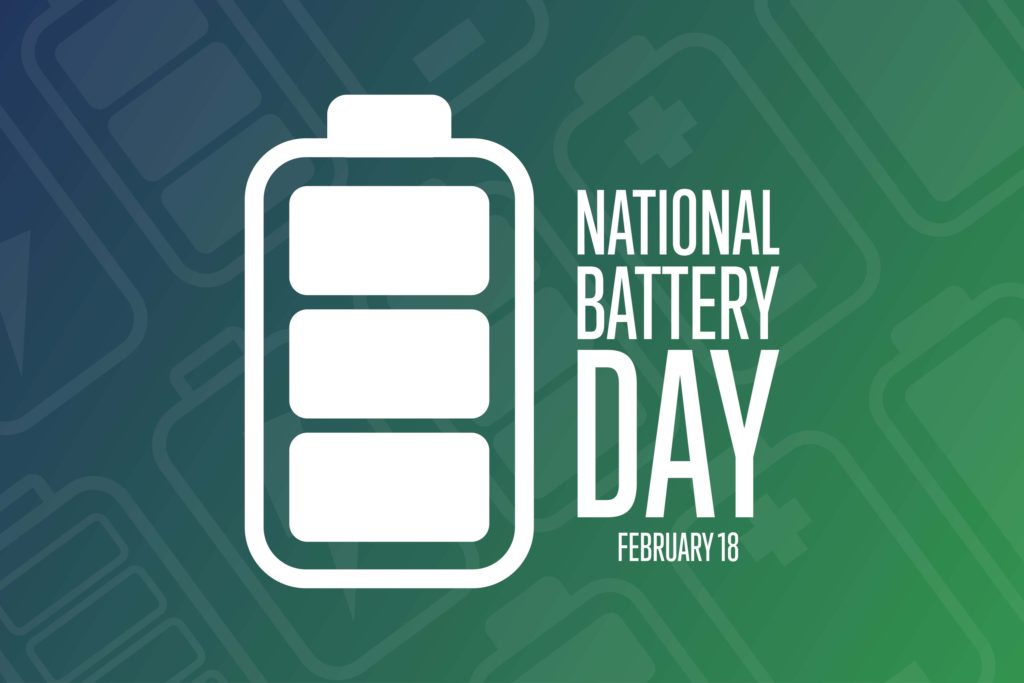National Battery Day is an annual holiday celebrated on February 18th to recognize the role that batteries play in powering our daily lives. From the batteries in our phones and laptops to the ones in our cars and homes, we rely on batteries to keep us connected, entertained, and safe.
National Battery Day History
National Battery Day is an annual holiday celebrated on February 18th. The holiday was created to celebrate the many applications of battery technology and to raise awareness about the importance of proper battery usage and disposal.
The first battery was invented in 1800 by Italian scientist Alessandro Volta. Volta’s invention consisted of a stack of copper and zinc discs separated by pieces of cardboard soaked in brine. This invention, known as the Voltaic pile, was the first practical method of generating electricity.
Over time, battery technology continued to evolve, leading to the creation of a wide range of battery types and applications. Today, batteries are used in everything from small electronic devices like phones and laptops to large-scale energy storage systems like those used in renewable energy installations.
In recent years, battery technology has continued to advance, with new technologies like lithium-ion batteries becoming more widespread. These new batteries offer the potential for higher energy densities and longer lifetimes than older battery technologies.
About Battery Technology
Batteries have come a long way since the first battery was invented by Alessandro Volta in 1800. Today, batteries power a wide range of devices and technologies, from small electronics to large-scale energy storage systems. Learning about battery technology can help you better understand the devices you use and the impact they have on the environment.
One important aspect of battery technology is understanding how batteries work. Batteries generate power by converting chemical energy into electrical energy. In simple terms, a battery consists of one or more cells, which contain two electrodes – a positive electrode (called a cathode) and a negative electrode (called an anode) – and an electrolyte solution. When a battery is connected to a device, a chemical reaction occurs between the electrodes and the electrolyte, generating a flow of electrons that produces electrical energy.
There are many different types of batteries available today, each with their own strengths and weaknesses. Some of the most common battery types include:
- Alkaline batteries: These are the most commonly used batteries and are typically used in small electronic devices like remote controls, toys, and flashlights.
- Lithium-ion batteries: These are commonly used in portable electronics like smartphones, laptops, and tablets.
- Lead-acid batteries: These are used in cars, boats, and other vehicles that require a large amount of power.
- Nickel-cadmium batteries: These are commonly used in power tools and other high-drain devices.
In addition to these battery types, there are also many emerging battery technologies, including solid-state batteries and lithium-sulfur batteries. These new battery technologies offer the potential for higher energy densities, longer lifetimes, and lower costs than existing battery technologies.
National Battery Day Celebration ideas
Here are some ideas for how to celebrate National Battery Day:
- Properly dispose of old batteries: Take the opportunity to clean out your battery drawer or container and dispose of old batteries in a responsible manner. Many stores, like Best Buy and Home Depot, offer recycling services for batteries.
- Learn about battery-powered innovations: Spend some time researching and reflecting on the many ways that batteries power our daily lives. Take a virtual tour of a renewable energy installation that uses batteries for energy storage, or read up on the latest developments in electric vehicle technology.
- Take a battery safety quiz: There are many online resources available to help you learn about battery safety and best practices for battery use and storage. Take a quiz to test your knowledge and learn more about how to use batteries safely and responsibly.
- Share your appreciation for battery technology on social media: Use the hashtag #NationalBatteryDay to share your appreciation for battery technology and to connect with others who are celebrating the holiday.
- Experiment with battery-powered projects: Take the opportunity to experiment with battery-powered projects, like building a battery-powered toy or creating a solar-powered battery charger.
By taking the time to learn about battery technology and celebrating the many ways that batteries power our daily lives, we can all contribute to a more sustainable and connected world.
